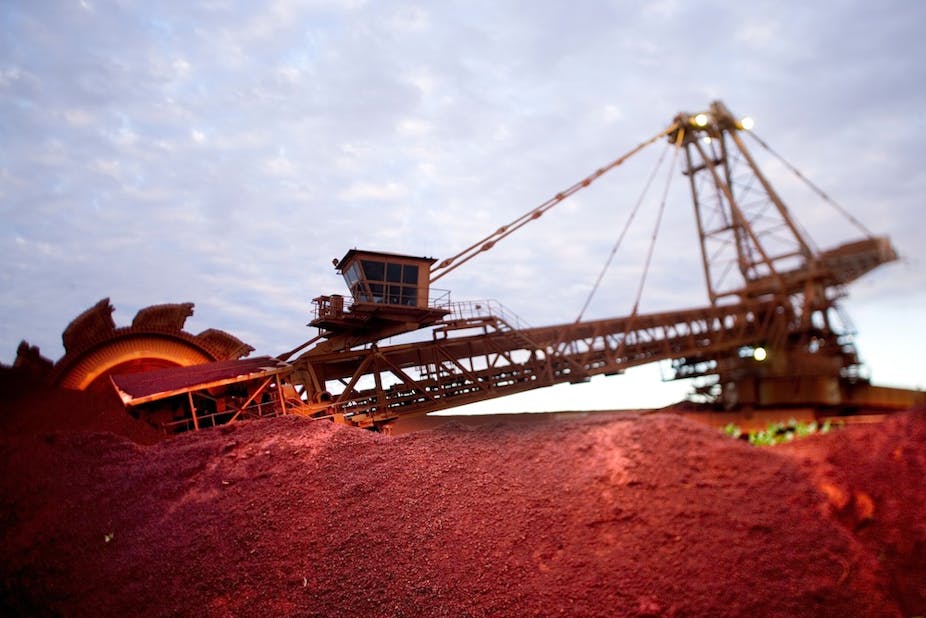Rumour has it that Brazilian mining giant Vale is eyeing up the Yilgarn region of West Australia for a new venture. Forget notions of Vale trying to invade the backyard of its prime competitors BHP Billiton and Rio Tinto. The decision is all business and exactly the sort of strategic move that any major multinational would take. What remains to be seen is if Australia will have the wit to seize the new opportunities it could bring to engage a major emerging market.
Major foreign acquisitions are nothing new for Vale. In 2006, Brazil suddenly became the sixth largest foreign investor in Canada when Vale bought nickel mining giant Inco for a cool $17 billion cash. Five years of booming resource prices have only deepened Vale’s pockets. Even during the slowdown of 2011, the company continued to make money hand over fist. Operating revenues rose 29.9% from US$46.81 billion to US$ 60.389 billion, resulting in net revenue of US$22.885 billion.
Vale shareholders are unsurprisingly happy and demanding more impressive results, leaving the company with two unique problems. First, what should it do with this mountain of cash? Second, how can it ensure that it continues to post such spectacular results?
Vale’s answer to the first question was simple: a $3 billion share buy-back program and the issue of a special dividend to share holders. The second question is more complicated, because it involves cutting costs in an industry with a fairly stable cost-base and dealing with the country’s reliance on Brazilian iron ore mines.
Vale faces a simple challenge. The cost of shipping high quality iron ore from Brazil to China is two and half times more than from Australia. For corporate strategists in Rio de Janeiro, the answer was a turn to economies of scale. A fleet of super-sized ore carriers capable of carrying up to 400,000 tonnes of ore was commissioned. These giants are 10% larger than anything else on the high seas and forecast to reduce shipping costs by 20%-25%, which could erase much of Australia’s shipping cost advantage.
Unfortunately, Chinese authorities are uncomfortable with the 400,000 tonne capacity of the Valemax fleet, citing both labour and safety concerns should the ships dock at their deep-water ports. Some substance was given to these fears when the Vale Beijing nearly sank while being loaded at the Brazilian port of Ponta da Madeira shortly after it entered service.
In response, Vale has turned to a regional distribution system for south-east Asia that will see the Valemax fleet throwing away their intrinsic efficiency by delivering shipments to regional distribution centres at Subic Bay in the Philippines and Lumut, Malaysia. China has complained about this strategy, too, questioning if the company is actually capable of managing its logistics operations. To mollify this criticism and gain entry to Chinese ports, Vale is now looking at leasing its Valemax fleet to Chinese operators.
While the shipping debacle may be approaching some sort of a conclusion, it still leaves Vale with the challenge of getting ore on the ship. Recent floods in Brazil damaged critical transportation infrastructure at key mining sites. The parlous state of infrastructure in Brazil means that similar disruptions could reoccur. When this is combined with the shipping challenge and the need to bring new operations online to ensure continued rising profits the only viable answer is one of geographically diversifying sources of iron ore supply, preferably with sources closer to China.
The rumours about Vale investment in the Yilgarn region point to Australia being a major part of the answer. If we look to the Canadian example, it also suggests great opportunity for Australia.
Vale’s purchase of Inco prompted the Canadian government to give serious attention to bilateral relations. Mutual political consultations surged with both governments sending teams of deputy ministers to each other’s capitals for regular talks. This was paralleled by enhanced political and business engagement, resulting in over six billion dollars of annual trade and FDI stocks of over twenty-three billion dollars. Where it was easy to get a seat on a flight from Canada to Brazil before the Inco buyout, it is now a serious challenge that requires careful advance planning.
West Australian Premier Colin Barnett has so far made all the right noises about welcoming Vale as an investor in his state. But he has focused on the implications of Vale’s entry for the mix of resource extraction companies that negotiate with his government. The wider question is whether he and his political colleagues in other states and Canberra can see other possibilities and build on a big Vale investment to create synergies in other areas.
There is nothing intrinsically special about Australia for Vale or the Brazilian government, which holds a major stake in the company. Without serious effort from political leadership, Australia will remain little more than just another resource-producing country in the eye of Brazilian power brokers. Just because a major Brazilian company may have stumbled on Australia as possible answer to its own strategic challenges does not mean that others in Brazil will automatically see a reason to follow.

